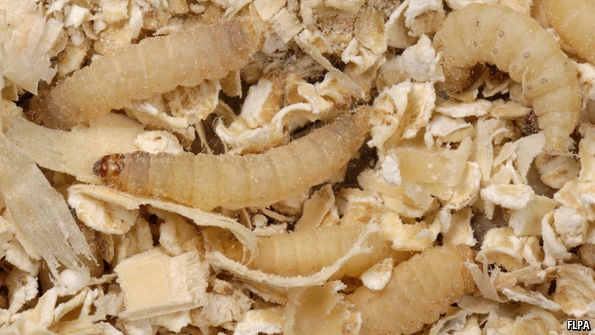If you are an older person who wakes up too early in the morning, you may wonder what causes you to do so.
Aging may contribute to multiple unique conditions that worsen sleep in the retirement years and among the elderly. Discover some of the potential causes of early morning awakenings, including contributors to insomnia such as circadian rhythm and melatonin production changes, advanced sleep phase syndrome, dementia, untreated sleep apnea, mood disorders like depression, and even going to bed too early.
Understanding the Nature of Insomnia
Not everyone who wakes up too early suffers from
insomnia. Insomnia is defined as difficulty falling asleep or returning to sleep after an awakening. It may lead to prolonged periods of wakefulness and may make sleep less refreshing. It may cause impairment during the daytime, including symptoms of fatigue as well as worsening mood, concentration, short-term memory, and pain complaints. There are many potential causes of insomnia.
It is normal to wake up at night. If the awakening is brief, it may be easy to return to sleep. Unfortunately, awakenings towards morning may come at a time when it is difficult to get back to sleep. This is because the
sleep drive, a desire for sleep dependent on the levels of a chemical called adenosine in the brain, has been greatly diminished. Many times an awakening toward morning results in the affected person simply staying awake the rest of the night.
What causes
early morning awakenings to occur? To better answer this question, it may be helpful to explore the corresponding system that enhances our ability to sleep overnight.
The Role of Circadian Rhythms and Melatonin in Aging
In particular, it helps to coordinate the timing of sleep to occur during the natural period of darkness. An area of the brain called the
suprachiasmatic nucleus (SCN) in the hypothalamus directs this rhythm. It lies close to the optic nerves that extend from the eyes to the brain. As such, it is heavily influenced by light input.
Light, especially
morning sunlight, has a strong influence on the circadian rhythm. It reinforces waking. If an organism lives in an exposed environment, it may not be safe to remain asleep when it is daytime. Light helps to adjust the timing of sleep. This also seasonally impacts sleep and mood. In the winter, many people have a desire to sleep in as darkness persists, and inadequate light may contribute to seasonal affective disorder.
In older people, it is common for the brain to produce less
melatonin. This sleep signal may reinforce the ability to sleep. This decrease in production may be due to changes in the pineal gland. It is also possible that decreased light perception, such as the discoloration that often occurs in the lenses of the eyes among older people, may play a role. Some people take melatonin as a sleep aid in an attempt to normalize these levels, but this may be of limited benefit.
Older adults are more likely to experience two circadian rhythm sleep disorders:
advanced sleep phase syndrome (ASPS) and irregular sleep-wake rhythm. Each of these may cause early morning awakenings. ASPS is characterized by a desire to fall asleep and wake early. Those affected may doze in the late evening hours and then wake by 4AM with an inability to get back to sleep. This condition is relatively uncommon, affecting about 1 percent of people. It may have a genetic predisposition.
Irregular sleep-wake rhythm occurs more often among people who are institutionalized, especially among those with dementia like Alzheimer’s disease.
This may be due to reduced exposure to the natural patterns of light and darkness. It may also occur due to damage or degeneration of areas of the brain that are important for circadian regulation. The incidence is not well studied, but it is believed to be relatively rare among healthy populations.
Blaming Sleep Needs and Sleep Apnea in Older People
There are perhaps two reasons older people wake up too early that account for most of these awakenings: sleep needs and sleep apnea. Beyond the age of 65, it is estimated that the average
sleep need decreases from 7 to 9 hours to 7 to 8 hours. This may seem like a modest difference, but it may still be significant.
Retirementitself may contribute to its impact.
Often as people retire, they relish the opportunity to permanently silence their alarm clocks. Such folks might say, “I am retired: I don’t have to get up at a specific time any more.” Although this may be true in reference to work demands, it may neglect a bodily need. By allowing the wake time to vary—rather than getting up at the same time every day—the circadian rhythm and sleep drive are both impacted. The restricted lifestyle in retirement may also contribute to boredom and social isolation, prompting some to even go to bed earlier.
Moreover, due to the diminished need for sleep among this age group, the quality of rest can be compromised by spending more time in bed. If someone now needs 7 hours of sleep, but goes to bed at 9 PM and tries to sleep until 7 AM (even after an earlier awakening), the 10 hours in bed will include 3 hours of insomnia. This can occur even among those who previously slept well, as the time in bed exceeds the ability to sleep. Reducing the time in bed to reflect current sleep needs may enhance the quality of sleep and reduce these awakenings.
In addition,
obstructive sleep apnea often contributes to early morning awakenings. This condition occurs more often among older people, with the frequency increasing 10-fold in women beyond menopause. Sleep apnea may be associated with snoring, daytime sleepiness, teeth grinding (bruxism), waking often to urinate (nocturia), and unwanted awakenings that lead to insomnia.
Sleep apnea may be worsened during periods of
REM sleep, when the muscles of the body are relaxed so that dream-enactment does not occur. REM sleep occurs at 90-minute to 2-hour intervals and is concentrated in the last third of the night. (These regular sleep cycles also prompt a brief awakening as each cycle is completed.)
Perhaps not coincidentally, this timing often corresponds to regular early morning awakenings. Sleep apnea may cause a person to wake, and insomnia may make it harder to get back to sleep. Treatment of sleep apnea with continuous positive airway pressure (CPAP) or an oral appliance may help to reduce these events.
Considering Mood and Other Environmental Causes of Waking Too Early
Finally, it may be important to consider the role of mood disorders contributing to early morning awakenings in older people. Depression is often associated with these events. It should be noted that depression is also strongly linked to sleep apnea, so this might be more evidence of an underlying sleep-related breathing disorder.
In addition, anxiety may exacerbate insomnia. No matter the cause, if the awakening elicits an anxious or frustrated response, it will become more difficult to return to sleep. This might be improved with
cognitive behavioral therapy for insomnia (CBTI).
Treatment of these mood disorders may help to improve sleep. There seems to be a bidirectional relationship, with one inevitably affecting the other. By improving both mood and sleep simultaneously, both can improve.
It might also be important to consider the influence of environmental factors. Noise, light, and temperature may prompt awakenings. Consider whether changes in the sleep environment are necessary to optimize the quality of early morning sleep.
If you continue to wake too early, and feel that you are overly tired with poor quality sleep, consider speaking with a board-certified sleep physician. By reviewing your history, it may be possible to identify causes and conditions that may respond well to treatment.
Sources:
Brzezinski, A et al. "Effects of exogenous melatonin on sleep: a meta-analysis." Sleep Med Rev 2005;9:41.
Kryger MH et al. "Principles and Practice of Sleep Medicine." Elsevier, 6th edition, 2016.
Moore-Ede, MC et al. “A physiological system measuring time,“ in The Clocks That Time Us. Cambridge, Massachusetts, Harvard University Press, 1984, p. 3.
Peters, BR. “Irregular Bedtimes and Awakenings,” in Evaluation of Sleep Complaints. Sleep Med Clinic. 2014;9:481-489.































